
Using fork lifts, pallet jacks and lots of hands, it took only three and a half hours to load the 40 foot container. Sometimes, because of the odd shaped items, it is like a puzzle to get every bit of space filled. This is where the clothing in bags comes in handy - to fill these odd shaped spaces. To the right we finish off with as many bikes as we can squeeze in. This shipment had 120 bikes. It was almost a four month journey for the container. It traveled from Oakland, California to Karachi, Pakistan then into Afghanistan where it arrived in Kabul on October 20, 2003.
|

Linda Levitsky of the East Bay Depot for Creative Reuse puts the finishing touch on our first shipment to Afghanistan.
|
|
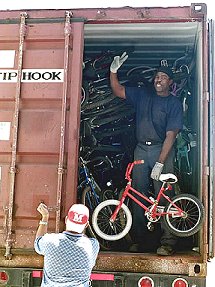
Volunteers from St. Vincent DePaul worked hard to load the container. It is such a pleasure to work with these dedicated people.
|
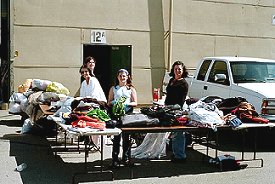
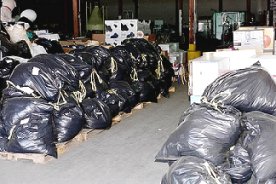

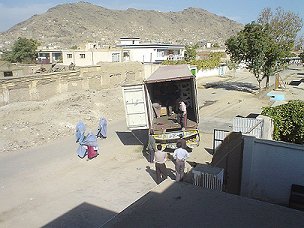
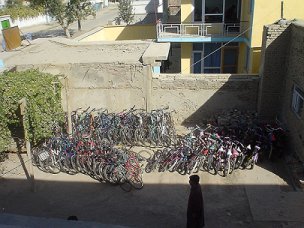
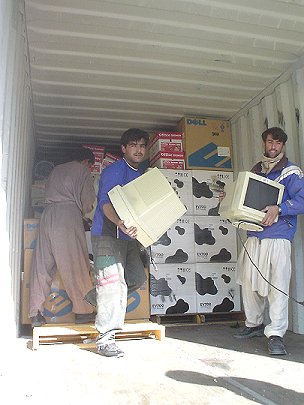
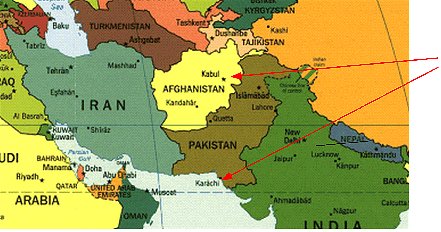
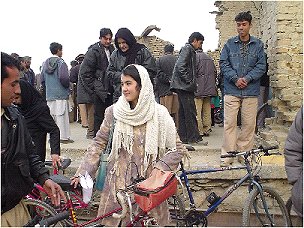
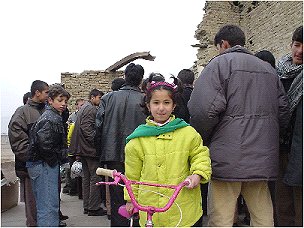
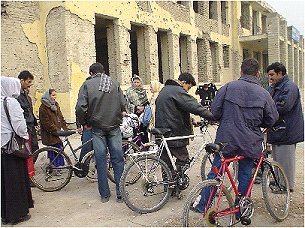 While this container provided just a small amount of assistance to an area that has been devastated by war and years of stifling oppression, you can’t help but see hope in these photos. The high school building in the background was severely damaged and is need of renovation, but you can see the future in these faces.
While this container provided just a small amount of assistance to an area that has been devastated by war and years of stifling oppression, you can’t help but see hope in these photos. The high school building in the background was severely damaged and is need of renovation, but you can see the future in these faces.